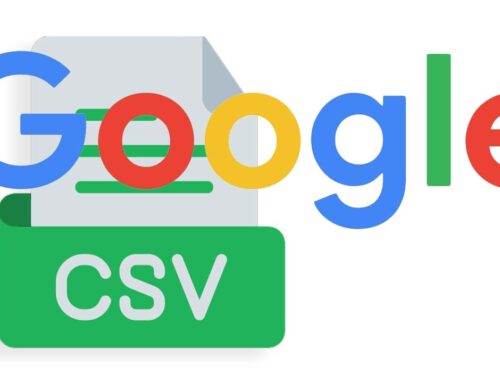One such significant update in Google’s search algorithm is the introduction of BERT (Bidirectional Encoder Representations from Transformers). BERT is a natural language processing (NLP) model that helps Google better understand and process complex search queries. In this comprehensive article, we will explore the Google BERT algorithm update, its motivations, effects on search results, and its lasting impact on search engine optimization (SEO).
You will learn about the factors that led to the creation of the BERT update, how it works, its impact on the SEO industry, and how it has shaped the way search engines approach query understanding and processing. We will also discuss the various updates and iterations BERT has undergone since its launch and the most important takeaway from this influential update.
Table of Contents
- Introduction to the Google BERT Algorithm Update
- The Need for the BERT Update
- How Does BERT Work?
- Impact of BERT on SEO
- BERT’s Legacy and Its Effects on Search Engine Optimization
- Final Thoughts
- Sources
1. Introduction to the Google BERT Algorithm Update
The Google BERT algorithm update was first introduced in October 2019, with the primary goal of improving the search engine’s ability to understand and process complex, long-tail search queries. BERT is an advanced natural language processing model that helps Google process and interpret the context and intent behind search queries, particularly those that involve complex sentence structures or rely on the understanding of prepositions and context. By leveraging the power of BERT, Google can provide more relevant and accurate search results for a wide range of queries.
2. The Need for the BERT Update
Before the introduction of BERT, Google’s search algorithm relied heavily on traditional keyword-based matching and other NLP models that were not always effective at understanding the underlying intent of complex search queries. As a result, users would sometimes receive search results that were less relevant or useful, particularly for queries with ambiguous meaning or that relied on contextual understanding.
To address this issue, Google developed BERT, a state-of-the-art NLP model that could better understand and interpret user intent behind search queries. By incorporating BERT into its search algorithm, Google aimed to improve the overall quality and relevance of search results, particularly for complex queries that rely on contextual understanding.
3. How Does BERT Work?
BERT works by analyzing search queries and understanding the context and relationships between words and phrases within them. It then uses this understanding to match queries with the most relevant and useful search results. Some key aspects of BERT’s functionality include:
- Bidirectional understanding: BERT analyzes the words and phrases used in a search query in both directions, enabling it to better understand the context and meaning of the query.
- Pre-trained language model: BERT is pre-trained on a large corpus of text, which allows it to learn and understand the nuances of human language, including syntax, semantics, and context.
- Contextual understanding: BERT is capable of understanding the relationships between words and phrases within a query, allowing it to better interpret the meaning of search queries and match them with the most relevant content.
4. Impact of BERT on SEO
The introduction of BERT had significant implications for the SEO industry, as it further emphasized the importance of creating high-quality, contextually relevant content that genuinely addresses user intent. Some key changes that occurred as a result of the BERT update include:
- Focus on context and relevance: With BERT’s advanced understanding of context and relationships between words and phrases, SEO professionals needed to ensure their content was contextually relevant and accurately addressed the intent behind targeted search queries.
- Importance of high-quality content: BERT’s focus on understanding user intent emphasized the need for SEO professionals to prioritize the creation of high-quality, informative content that genuinely provides value to users.
- Less emphasis on keyword optimization: As BERT is better at understanding the meaning and intent behind search queries, the focus on keyword optimization became less important, with greater emphasis placed on creating content that addresses user intent and provides value.
5. BERT’s Legacy and Its Effects on Search Engine Optimization
The Google BERT update has had a lasting impact on the way search engines approach query understanding and processing, as well as how SEO professionals optimize their content. Some key effects of the BERT update on search engine optimization include:
- Prioritization of user intent: BERT has reinforced the importance of understanding and addressing user intent in content creation and optimization, leading to a greater focus on user-centric content strategies.
- Emphasis on contextually relevant content: BERT’s advanced contextual understanding capabilities have emphasized the need for SEO professionals to create content that is contextually relevant and accurately reflects the meaning and intent of targeted search queries.
- Focus on content quality and value: With BERT’s focus on providing the most relevant and useful search results, SEO professionals have increasingly prioritized the creation of high-quality, valuable content that genuinely addresses user intent and provides useful information.
Final Thoughts
The most important takeaway from the Google BERT algorithm update is the critical role that context and user intent play in search engine optimization. By focusing on the context and intent behind search queries, BERT has shifted the SEO industry towards a more user-centric approach that prioritizes the creation of contextually relevant, high-quality content.
To succeed in today’s online landscape, SEO professionals must adapt their strategies to align with the evolving understanding of user intent and context in search algorithms like BERT. By doing so, they can not only improve their search rankings but also provide a better overall experience for users seeking their products or services.
Sources
- Understanding searches better than ever before – Google: https://www.blog.google/products/search/search-language-understanding-bert/
- What is BERT? – Search Engine Journal: https://www.searchenginejournal.com/google-bert-update/332161/
- Google BERT: The Definitive Guide – Backlinko










